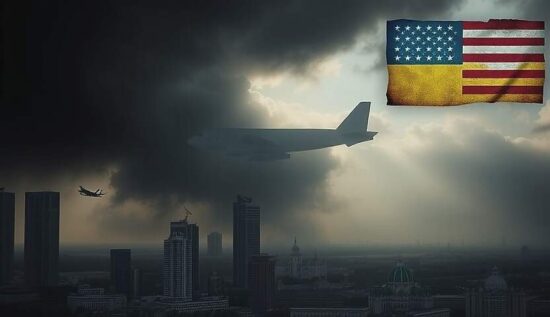US and Western Military Aid
Since the start of the Russian war in 2022, the United States has provided nearly 66 billion US dollars, the European Union over 52 billion euros and the United Kingdom over 10 billion pounds of military aid to Ukraine. The US and its allies continue to support Ukraine through training, logistics and military intelligence. This support is coordinated by the NATO Staff for Security Assistance and Training, led by a three-star US general. At the same time, Western officials have repeatedly expressed concerns over a possible escalation of the conflict and the challenges of ensuring sufficient production capacity in the arms industry and simultaneously maintaining a sufficient budget for security assistance.
Training
The United States and other allies have been providing military training and advice to the Ukrainian Armed Forces (UAF) since before the Russian invasion in 2022. Current training programs focus on the use of Western weapons, basic infantry skills and military coordination at the level of various units, as well as the practice of operations with combined arms.
Currently, the United Kingdom (Operation Interflex), the European Union’s Military Assistance Mission for Ukraine (EUMAM) and the United States (Joint Multinational Training Group – Ukraine) are conducting various training programs for the UAF. According to the Defense Ministry, the United States and its allies have trained over 156,000 Ukrainian soldiers since 2022. Training may gain importance as the UAF tries to replace its losses with mobilized personnel.
Military Equipment
In the early stages of the war, the provision of US and European anti-tank missiles and short-range, shoulder-fired air defense systems was crucial for Ukraine’s resistance against the Russian invasion. As the war has progressed, the partners of Ukraine have adjusted their security assistance to adapt to the changing circumstances and the developing needs of the UAF.
On a tactical level, the UAF has identified ‘protected mobility’ for example, armored vehicles, as well as tanks and fire support on a tactical level as priorities. UAF officials also express particular concerns over their dependence on Western stockpiles of artillery ammunition. Insufficient stockpiles force UAF units to ration artillery fire.
The procurement of air defense systems remains a top priority for the UAF, both strategically and tactically. Ukrainian officials emphasize the importance of securing ammunition for Ukraine’s air defense in the face of ongoing Russian attacks on military and civilian targets.
Current Military Outlook
The UAF continues to show high levels of tactical flexibility and capability in the face of Russian quantitative advantages in equipment, air support and electronic warfare. As the war increasingly becomes a war of attrition, some observers argue that the UAF should focus on preserving its combat readiness and building defensive fortifications.
The command structure of the UAF appears more centralized than at the beginning of the war. While the UAF is trying to adopt NATO principles of command and control (mission command), it also shows features of a Soviet style (centralized, top-down). Moreover, Ukrainian President Volodymyr Zelenskyy appointed General Alexander Syrsky as the Commander-in-Chief of the Ukrainian Armed Forces in February 2024. Syrsky is said to align more with Zelenskyy’s political views and war strategy.
The UAF is still seeking Western equipment to equip new units, improve capabilities and offer improved survivability. Ukrainian officials also highlight the importance of continuous ammunition stockpiles, particularly as the war continues to be dominated by artillery.
The UAF relies on a core of professional units to execute operations and respond to Russian advances. However, losses and exhaustion are gradually eroding the capabilities of these units, as they are increasingly called upon to occupy various positions along the front line. Often, segments of units are detached and sent to other units to compensate for losses, rather than fighting as cohesive formations. Some observers speculate that an overreliance on a few units, combined with personnel losses, may contribute to Russian advances.
The UAF faces a significant infantry shortage and is trying to recruit more personnel to replace losses and rotate units from the front line. The shortage of infantry has forced the UAF leadership to use personnel from support positions and the air force as infantry. The training of new recruits to replace and expand professional units, as well as officers for staff positions, remains a central goal.
Moreover, the UAF is facing the challenge of equipping new units, while simultaneously replacing the equipment of existing units. The ability of the UAF to regenerate and maintain its troop quality will likely be decisive for its success.
In August 2024, the UAF launched a surprise invasion of the Russian region of Kursk. The Kursk Offensive has raised questions among some observers, such as how the Ukrainian leadership prioritizes scarce human and material resources against Kursk and simultaneously allows Russian forces to continue capturing territory in the Donbas.
Some observers and UAF officials have criticized the poor communication and decisions of the UAF leadership regarding reinforcements. The UAF has also been criticized for its strategy of not withdrawing from positions, even with the risk of being encircled, which adds to the infantry shortage.
These developments may influence the decisions of Congress on whether and how to continue supporting the defense of Ukraine. Some observers suggest that a sustained Western security assistance is crucial to avoid a deterioration of the situation. Other observers argue that the UAF, despite security assistance, faces significant hurdles to decisively defeat Russian forces.
Conclusion
Although the CRS document does not openly state it and even makes small concessions to earlier spin doctoring of the “victorious Ukraine”, the reader can infer between the lines that Ukraine has found itself in a catastrophic situation by the end of the third war year. The numerous structural shortcomings of the Ukrainian Armed Forces, as well as the weaknesses in the political and military leadership of Ukraine, have led to numerous and far-reaching failures. This has significantly restricted the Western options for further supporting the proxy war against Russia.
The ongoing war with Russia has not only eroded the resilience of Ukraine, but also emptied the NATO arsenals. These cannot be quickly replenished. Even if the money were there, the necessary production capacities would be lacking, both in terms of the material and the high-skilled workers one cannot find in the army of the unemployed.
In the end, the CRS report conveys to Congress a politically cautious, but desolate, picture of the situation into which the West has maneuvered itself with the Ukraine adventure. At the same time, the report hinted at how Congress could justify its exit from the Ukraine engagement, if one finds this sentence at the end of the document:
“These developments could influence the decisions of Congress on whether and how to continue supporting the defense of Ukraine.





